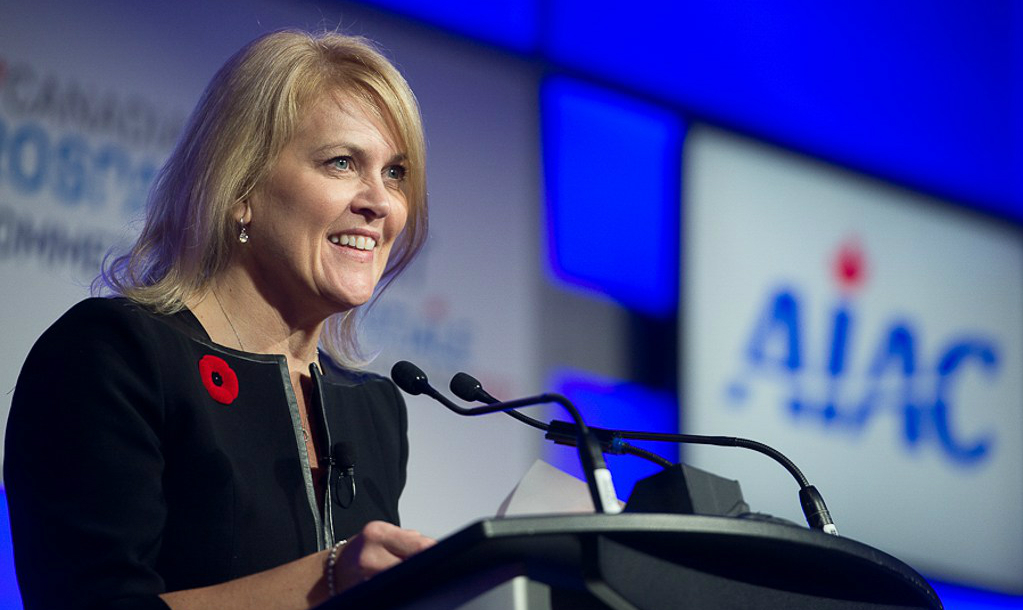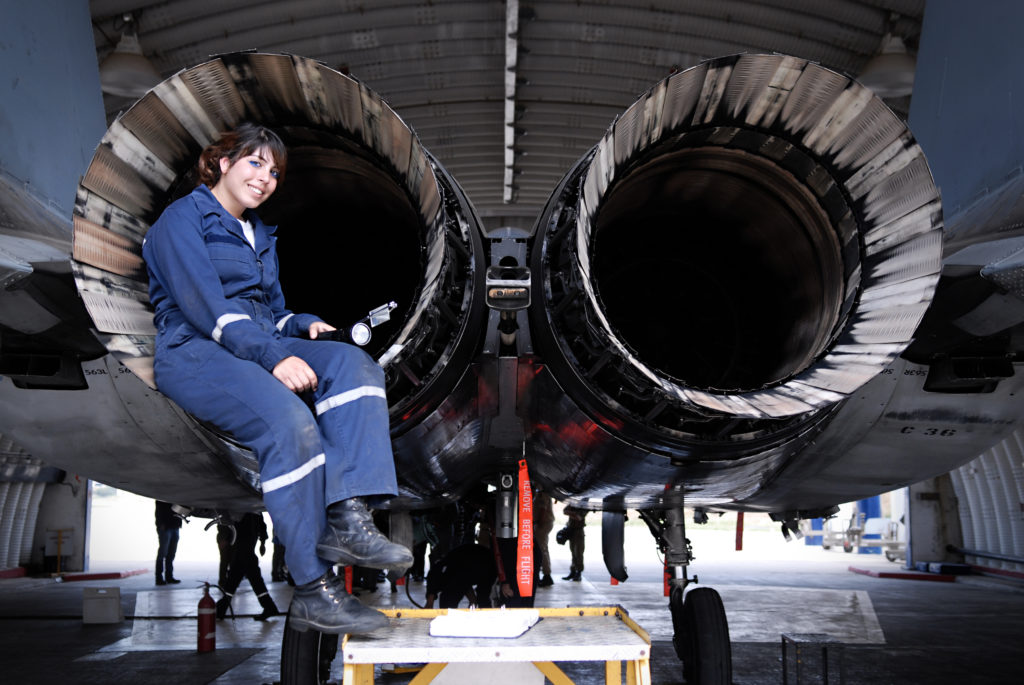Estimated reading time 7 minutes, 4 seconds.
If the 2018 priorities for the Aerospace Industries Association of Canada (AIAC) sound a lot like the federal government’s focus on innovation, that’s no coincidence.

New investments in space capability, procurement reform, and strengthening the position of small and medium sized enterprises (SMEs) are key drivers for AIAC as much as they are central pieces of the government’s Innovation and Skills Agenda.
“Aerospace is a really innovative sector for Canada…with over $1.6 billion spent in R&D [research and development] every year. That has also been [our] competitive advantage in the global market place. So that makes innovation something that I’m really focused on, both in my own company and with AIAC,” Cynthia Garneau, president of Bell Helicopter and AIAC’s incoming chair, told Skies in an interview on her plans and priorities.
A 23-year veteran of the Canadian aerospace sector, Garneau has held senior positions with Bombardier and Bell that put a premium on innovation, intellectual property, and working closely with small suppliers, universities and organizations like the Consortium for Aerospace Research and Innovation in Canada on pre-competitive innovations.
“The government’s focus on innovation as a driver of jobs and opportunity is great news,” she said. “Our sector is a poster child for how innovation makes Canada’s economy much better. We can help lead the way and show other industries how…we contribute, how we collaborate…[to] help the government move forward with its innovation and skills agenda.”
Innovation was one of two themes Garneau chose to highlight in an address to the Canadian Aerospace Summit in November when she accepted the AIAC chair. The other was diversity, a priority she argued could be crucial to growing innovative businesses that are able to attract talent from emerging technology areas like artificial intelligence (AI), robotics, and quantum computing.

“We need to understand how we can work with the government and our membership to attract and foster a diverse workforce of highly skilled people. I’m very interested in having more women in our industry, particularly in the manufacturing side of it. [I] will work with the government and our membership to see how we can influence this,” she said.
“The government has been very clear with us. They do not see us growing unless we take on things like diversity and show we can have more inclusion inside our industry,” added Jim Quick, president and CEO of AIAC.
Much of the association’s focus in 2018 will be a continuation of initiatives begun in 2017, he told Skies. “There is a lot on our agenda for next year just inside that innovation envelope.”
That will include more investment in the government’s five-year, $950 million Innovation Supercluster Initiative and support for an AIAC submission on MOST21, an supercluster proposal, led by CAE, on Mobility Systems and Technologies for the 21st Century that was shortlisted by the Department of Innovation, Science and Economic Development in October.
“[The government believes] the broader and more futuristic play will be [around] mobility,” said Quick. “This is our way of looking at the future and saying, in five to 10 years you are not going to [see] yourself as the fifth largest aerospace nation in the world, you are going to [see] yourself as the number one mobility nation in the world. So how do AI and data and other things play? Minister [Navdeep] Bains is really challenging us to think…about Canada in the future and what [we can] do to contribute.”
“[The supercluster initiative] is different and it’s going to foster collaboration not only within one industry but throughout industry,” Garneau added.
AIAC will work with government to refine the five-year, $1.26 billion Strategic Innovation Fund, a repayable and non-repayable funding program for a range of industrial and technology firms that, among other things, consolidates the Strategic Aerospace and Defence Initiative and Technology Demonstration Program into a single program. It will also be hoping for new funding in Budget 2018 on a new space initiative.
With the official launch in December of a project to replace the Royal Canadian Air Force fleet of 76 CF-188 Hornets, fighter jet procurement will again dominate the aerospace headlines for 2018. Though the focus will be on the acquisition process and the five likely contenders – Lockheed Martin, Boeing, Dassault, Eurofighter and Saab – Quick noted that for Canadian companies it will be more about innovation opportunities.
“When you look at how companies are going to be asked to position their value propositions and their use of Industrial and Technological Benefits, it is really about how do we foster continued innovation and use [defence procurement] programs to be an innovation leader from a global standpoint,” he said.
The fighter project could help provide greater impetus to a small business initiative launched by John Maris, president of Marinvent, when he was AIAC chair in 2016. Maris, who now leads the association’s small business committee, has proposed a consortium model that would see SMEs with a common area of expertise band together to offer original equipment manufacturers (OEMs) and Tier 1 suppliers a single point of contact for a given capability. Combined with academic research organizations and the support structures of government programs, a consortium could provide tremendous capability to a larger company.
Garneau said she supports the initiative and would be working with the association’s many SMEs to better access government programs and find ways to help them grow.
“The government is talking about the need to scale up smaller companies to make them more competitive from a global supply chain perspective,” Quick noted. One of the things we are doing inside the Innovation and Skills Agenda is directed at how we [can help] companies to grow. When large companies look at the supply chain, they are not just looking for a piece of technology, they also want a company that is going to be successful as a key supplier for them.”








